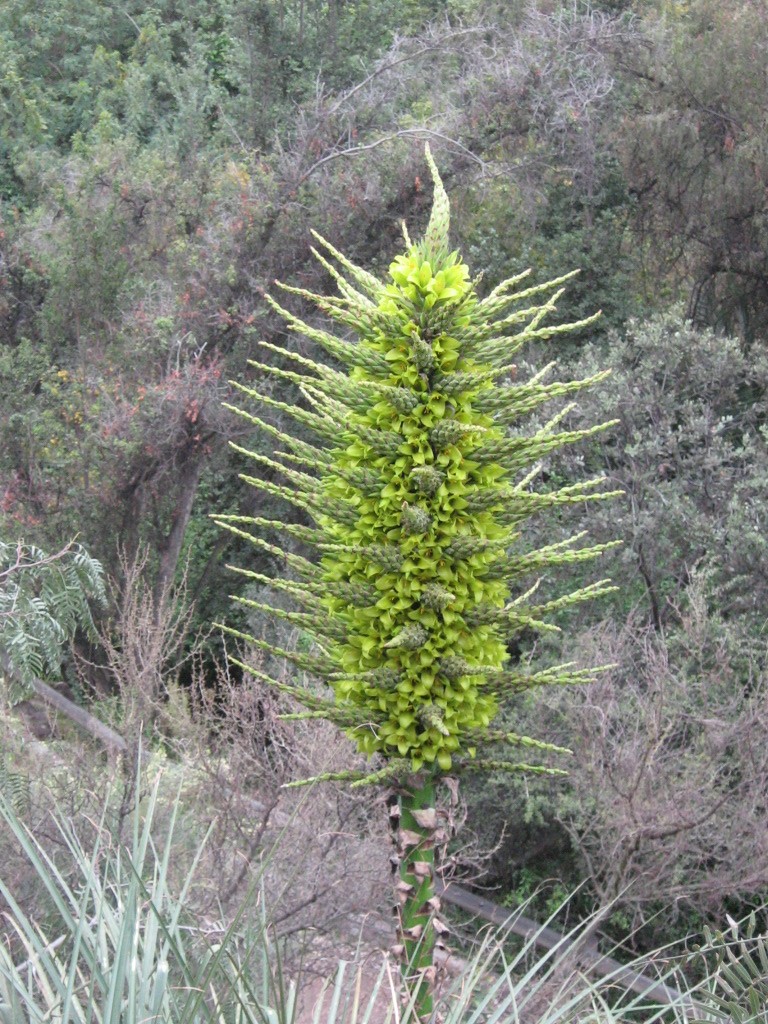- Puya chilensis
image_caption =
name = Puya chilensis
regnum =Plant ae
divisio = Magnoliophyta
classis =Liliopsida
ordo =Poales
familia =Bromeliaceae
subfamilia =Pitcairnioideae
genus = "Puya"
species = "P. chilensis"
binomial = "Puya chilensis"
binomial_authority = Molina"Puya chilensis", is a terrestrial
bromeliad originating from the arid hillsides ofChile . An evergreen perennial it forms large, dense rosettes of grey-green, strap like leaves edged with hooked spines. The green-yellow flowers are born on spikes up to 2 m high and which resemble a medieval mace. Spreading by offsets; over time "Puya chilensis" can colonise large areas. Growth is slow and plants may take twenty years or more to flower. Leaf spines point inward as well as outward and have been known to trap birds and small animals. Unable to escape the victim dies of starvation and its body's decay then provides additional nutrients to the Puya.Cultivation
Puya chilensis is easily raised from seed and when young can make a fine house plant. If grown outside it is able to withstand light frosts and may even survive brief overnight temperatures as low as minus five degrees Celsius. In colder regions it will require some winter protection and is best either grown in a conservatory or in a pot and brought inside during winter. Puya chilensis requires a well drained, lime free soil. It is drought tolerant but will appreciate plenty of water during the summer months. It is susceptible to rotting during winter if too wet. It will tolerate some shade but is best grown in full sun.
The spines, even on very young plants, are very sharp and can cause injury. Plants should be handled with great care. Thick protective clothing is recommended. Always plant away from path edges and areas where children are likely to play.
Natural Habitat
Arid hillsides of the
Andes . Common on north facing slopes of matorral areas at 300-1000 m above sea level.Conservation
Puya chilensis is not considered threatened and can be found within
Chilean Matorral . It is cultivated in many parts of the world.
In its natural arid environment plants can be highly flammable and are susceptible to damage from fires that are often the result of human action. Land clearance is an increasing threat.References
Shaw, Christine 2005. Architectural Plants. ISBN 0007204701
Miles, Tim & Rowe, David & Smit, Tim 2003. The New Cornish Garden. ISBN 185022174X
Wikimedia Foundation. 2010.

